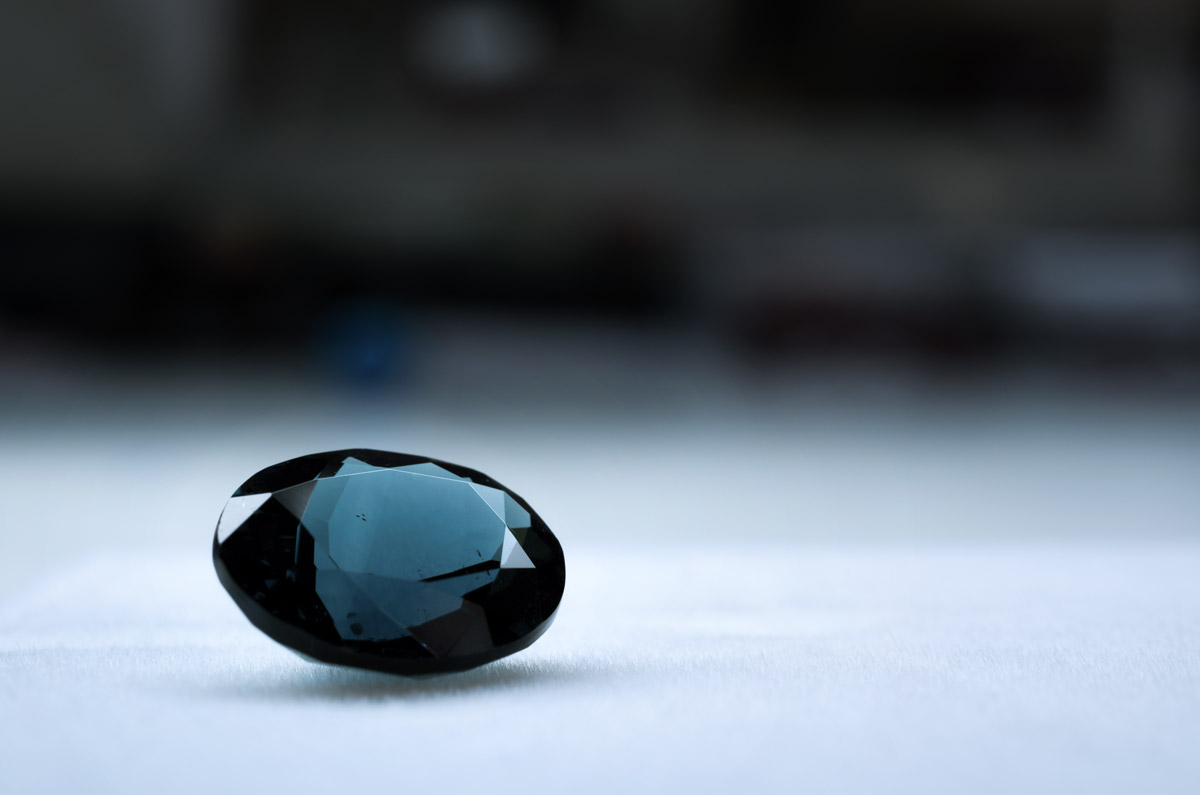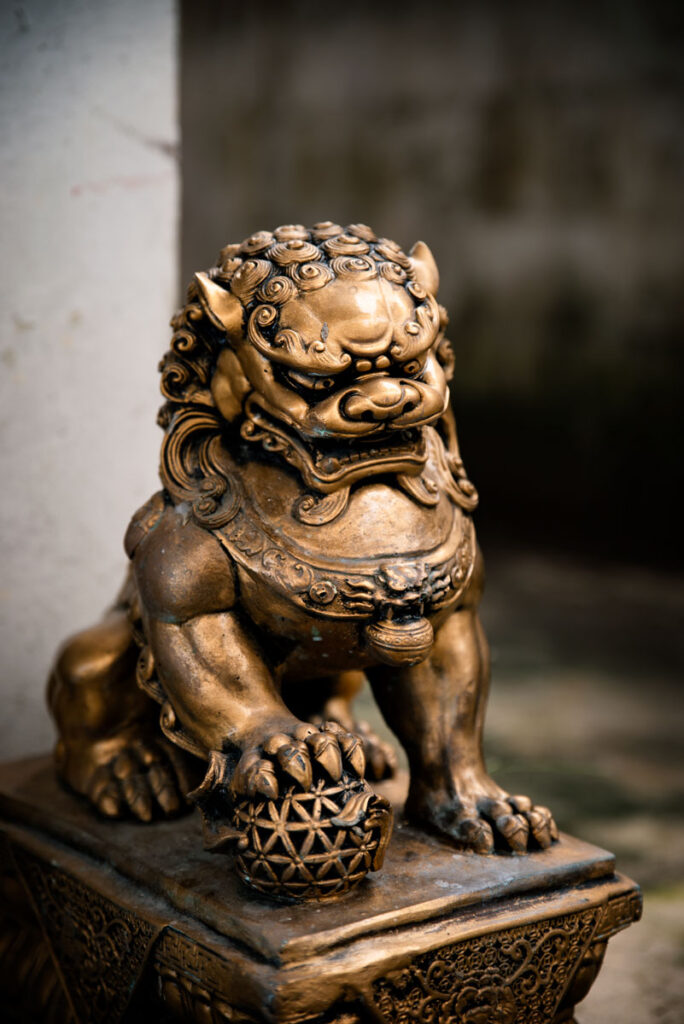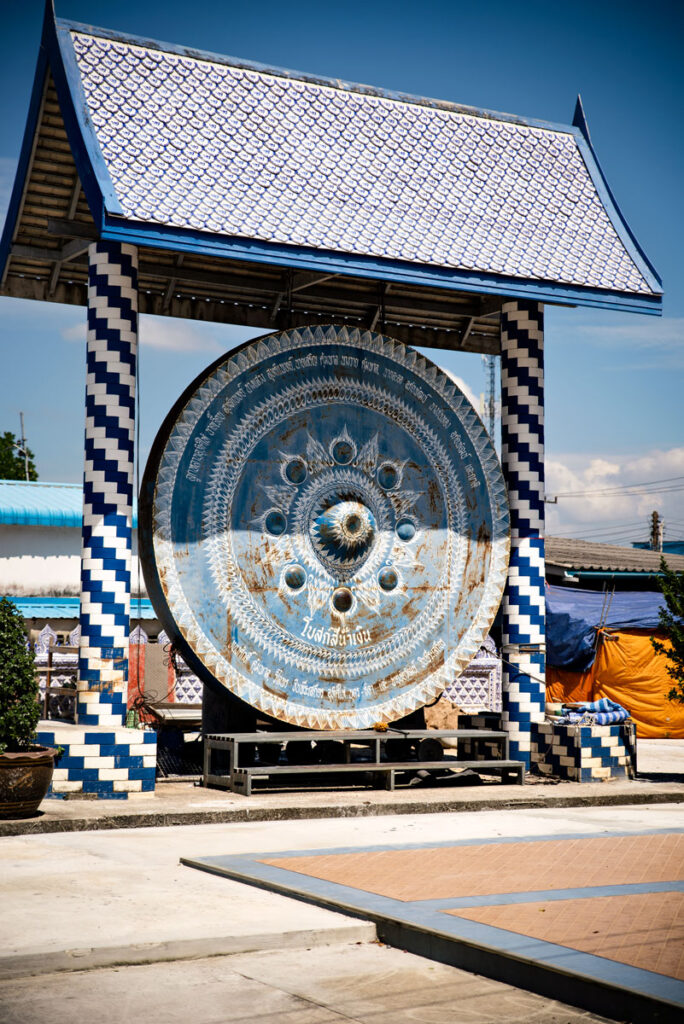Chanthaburi
City of the moon, city of precious stones and exotic fruits. A small jewel nestled on the banks of the Chanthabun River. The two towers of the Cathedral of the Immaculate Conception rise above all the buildings, a true exception among all the cityscapes lined with pagodas and prangs.


Chanthaburi is shaped by the past of the surrounding empires. Vietnamese Christians fled here in three waves – whenever the balance of power changed and persecution was imminent. The French gave the town its towering church during their brief period of colonial rule. Thanks to its direct access to the sea and its proximity to Cambodia, Chanthaburi was an important port and trading center for a long time. It gradually lost its role with the increasing importance of Bangkok.
In recent years, the Tourism Authority of Thailand has been trying to attract tourists interested in culture. There were plans for a high-speed train connection with Bangkok. Money has been poured into upgrading the Chantaboon Waterfront, the old Vietnamese and Chinese trading houses on the river. It’s probably busier here at the weekend, but today it’s a tired little street, surrounded on both sides by wooden houses, sometimes renovated, sometimes derelict. Here and there is a store selling local products or handmade art.



It was decades ago when Chanthaburi’s mines were extracting rubies and sapphires. Colored stones were also brought to Thailand from Cambodia via this town. As a result, Chanthaburi developed into a globally important trading center for gemstones.
At weekends, the streets are filled with traders and jewelry makers from Bangkok haggling for the best prices at the gemstone market. Finding a gemstone doesn’t just mean digging it out of the ground with great effort. It must then be cut and treated. Only a trained eye can recognize inclusions and colour deviations. Only a master of fine cutting can bring out the absolutely perfect brilliance and ensure optimal light refraction.



Despite this, we encounter virtually no tourists. Chanthaburi is a destination for anyone who can do without the party. A relaxed weekend getaway, a walk along the river, a respite from the hustle and bustle of the big cities of Pattaya or Bangkok.
Wat Phai Lom is a sprawling temple in the middle of the city. We arrive in the late afternoon, just as the monks are cleaning the grounds and washing their robes. Everyday life in the monastery. They give us a shy smile and ask simple questions in broken English. Chickens search for seeds between the buildings, a dog barks at us.


The blue temple Wat Pak Nam Khaem Nu lies directly on the water of the Gulf of Thailand. The salty sea air gnawed at it, destroyed it and ate away its walls. It was renovated and fell apart again. Until its exterior was finally covered with ceramic tiles that withstood the salt and the wind of the sea.
In the midday sun, we squint our eyes to be able to see anything at all – the blue and white tiles of the temple shine so brightly. In the large prayer hall, the Virhan, the large ceiling painting depicting scenes from Buddha’s life has not yet been completed. An eternal battle against decay.


We drive back to the city, make a stop at King Taksin’s shipyard and drive through plantations of exotic fruits; the province of Chanthaburi is the largest producer of the stinky fruit durian.
In the evening, we look for something to eat at the night market. Here, too, we are the only tourists. We choose mushrooms, cabbage and meat, which are coated in a spicy sauce and roasted on a hot grill. We sit down on a bench to eat and watch the hustle and bustle until the first stalls close.
Info about our trip
Chanthaburi is not exactly close to any tourist attractions or routes. So you have to head for the town specifically. It is either a day trip from Rayong or on the way to Koh Chang Island.
You can visit the city itself in one day. Add another day if you are planning excursions to the few surrounding attractions. Please note, however, that the tourist infrastructure is poorly developed. A few words of Thai will help you enormously here – but of course you can also manage with hand-and-foot English 😉
We recommend a trip to Chanthaburi if you have already seen a lot of touristy Thailand and now want to explore a real Thai city without having to travel deep into Isaan. A handful of vloggers and travel bloggers have also discovered Chanthaburi and praise the province as a real insider tip. It’s well worth it!
Chanthaburi is quite cheap as there is hardly any tourism, which drives up prices.
Basically, you can eat well and cheaply at the night market, as many Thais do. However, as a vegetarian you won’t have any luck there. Another evening we ate Italian food at Taste Homemade Pasta. The food is delicious, but you pay a lot for small portions. For a tasty and quick lunch (although it’s a bit on the outskirts of the city, so it’s easy to combine if you’re heading towards the sea), we can recommend the noodle restaurant Nai Go.
We stayed at the Riverawan Hotel right on the river. It is a modern, new and very clean hotel with a nice pool. Quiet location and the breakfast is also okay.
Chanthaburi is a tranquil city and, like almost everywhere in Asia, very safe. As there are hardly any tourists, the crime rate should also be at an extremely low level.
Thai society is very open-hearted and fond of children. It was not uncommon to see a bunch of Thais (mainly women) standing around our boy. The way Thais treat children is different to what we are used to in Europe. We would never go up to a stranger’s child and want to take it in our arms. This happens all the time in Thailand – people don’t even ask beforehand. You should also be prepared for Thais to take photos of your children – often without being asked. They will quickly whip out their smartphone and take a selfie with the blond, little farang (foreigner). Think about how you want to deal with this – from our Western perspective – cross-border behavior. You won’t always be able to prevent it. Be respectful and smile and let your counterpart know that you would like a little more distance. At the same time, you are even more welcome everywhere with children and we were often given preferential treatment (e.g. in queues).
However, don’t expect extra changing rooms anywhere – the sanitary facilities are often in an inadequate condition anyway. So take wet wipes and disinfectant gel with you. You can buy basic baby supplies in any 7/11 or supermarket. Diapers are not cheap and are often only available in large packs. It’s best to leave the baby carriage/stroller at home. The sidewalks are usually too bad and there are too many pedestrians and cars, especially in Bangkok, so you won’t have much fun with it. The most flexible option is a baby carrier.
We explored the entire city on foot and had our little man with us. Alternatively, you can also try to find a hotel / guesthouse with bike rental. An excursion to other attractions outside the city is best done with your own car, alternatively ask at the hotel if they can organize a cab with a driver for you.
- A short, academic excursion into the history of the city can be found in Chanthaburi: An Ancient, Multiethnic and Significant Municipality in Southeastern Thailand by Joachim Schliesinger
- A very good introduction to Thailand’s history in general can be found in Thailand’s Political History: From the 13th Century to Recent Times by B. J. Terwiel
